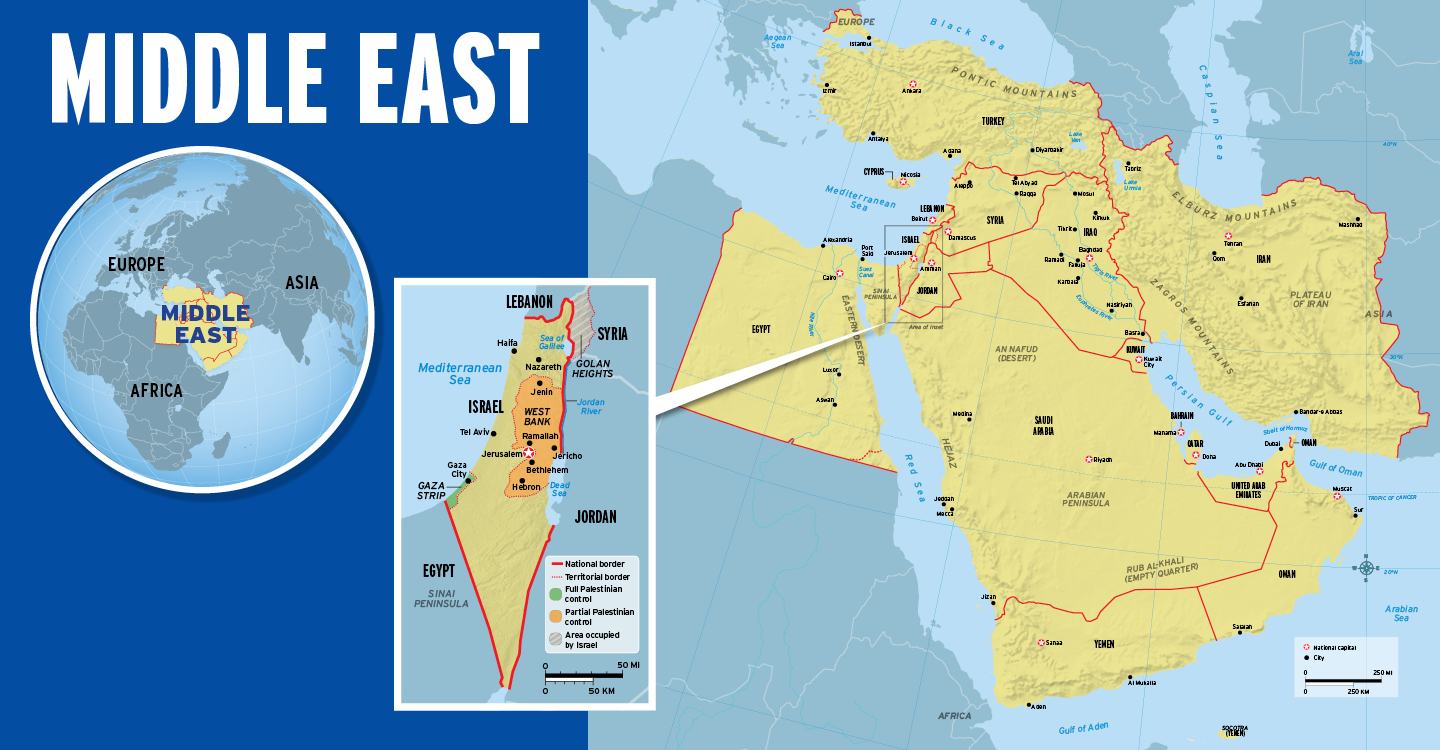President Trump, who has long considered Iran to be a threat to the U.S., pulled out of the 2015 nuclear accord in May 2018. The deal, which the U.S. and five other nations struck with Iran, was intended to prevent Iran from developing nuclear weapons, but Trump thought the deal wasn’t tough enough. Instead, the U.S. has reimposed harsh economic sanctions on Iran, which has put additional pressure on Iran’s struggling economy. Critics fear the moves may also make extremists in Iran more powerful.

Mapping Specialists/Jim McMahon
In the News, 2019: MIDDLE EAST
Ali Mohammadi/Bloomberg via Getty Images
Iranians protest after President Trump renounces the nuclear deal.
IRAN
Hamad I Mohammed/Reuters
A Saudi woman takes the wheel to celebrate the end of the driving ban.
SAUDI ARABIA
In June 2018, the Saudi government lifted its ban on women driving. The move is part of the social and economic reforms spearheaded by the king’s son and heir, Crown Prince Mohammed. The changes are intended to open up the ultraconservative nation to the outside and make life better for its citizens. But Saudi Arabia remains a near-absolute monarchy with little political freedom.
Ilia Yefimovich/picture alliance via Getty Images
Ivanka Trump at the opening of the new U.S. embassy in Jerusalem
ISRAEL
In May 2018, President Trump officially moved the U.S. embassy in Israel from Tel Aviv to Jerusalem. The relocation was applauded by the Israeli government, but most U.S. allies have no plans to follow suit because they believe the change will make it even more difficult to negotiate a peace deal between Israelis and Palestinians. The status of Jerusalem—which both Israelis and Palestinians claim as their capital—has long been considered one of the most difficult issues to resolve in the decades-long conflict.
